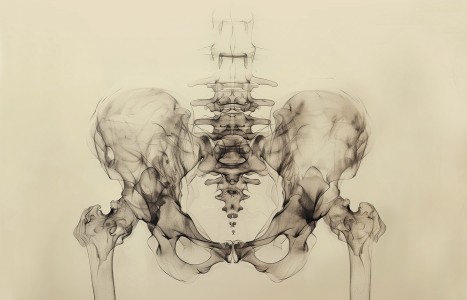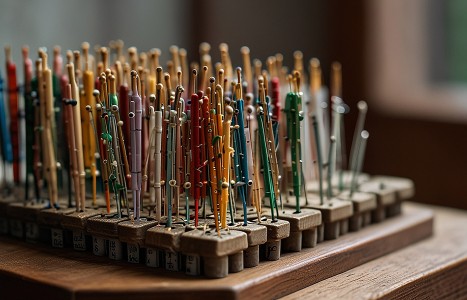People today want convenience, whether it be from their bank, credit card, favorite retail store, or restaurant. They demand it from the companies who hold their loyalty, including their health care providers (you). They don’t want to call and possibly be put on hold, and they want to use an app or schedule an appointment on your website. Here are three reasons your practice can gain by switching to online appointment scheduling.
Cost-Effective Essential Health Benefits: Expanding Consumer Choice and Access to Care with Acupuncture
Irwin Tjiong, MBA, LAc, AAAOM Director-at-Large
The Patient Protection and Affordable Care Act (PPACA), signed into law on March 23, 2010, will allow individuals and businesses to purchase health insurance directly through exchanges, i.e., competitive marketplaces where patients can compare coverage. These exchanges will offer a choice of qualified health plans (QHPs) that vary in coverage and must meet certain standards in categories of care, with limits on patient cost sharing.
The PPACA stipulates that these QHPs cover the general categories:
- Ambulatory patient services
- Emergency services
- Hospitalization
- Maternity and newborn care
- Mental health and substance abuse disorder services, including behavioral health treatment
- Prescription drugs
- Rehabilitative and habilitative services and devices
- Laboratory services
- Preventive and wellness services and chronic disease management
- Pediatric services, including oral and vision care
Further details of an "essential health benefit" package will be defined by the Secretary of Health and Human Services (HHS) based on the scope of benefits offered by a typical employer plan.
| AAAOM's Essential Health Benefits Campaign Update The American Association of Acupuncture and Oriental Medicine is actively working with the office of Congresswoman Judy Chu (D-CA) to designate acupuncture as a covered Essential Health Benefit (EHB) under the federal Patient Protection and Affordable Care Act (PPACA). Designation of acupuncture as an Essential Health Benefit under this federal law will serve as a gateway to increased opportunities for the profession to work throughout the nation with mainstream medicine. The core of AAAOM's message is that acupuncture increases patient choice and improves overall cost-effectiveness of American healthcare through prevention and its integration with mainstream medicine. The Institute of Medicine (IOM) is due to present a Consensus Report to the Department of Health and Human Services (HHS) this month. Once this report is published, AAAOM, with the help of its volunteers and allied organizations, plans to launch a national letter-writing campaign to the HHS in support of the inclusion of acupuncture in EHB. By December, HHS will determine whether or not to include acupuncture in EHB, so time is of the essence. This is the profession's window of opportunity. To enable this cause to succeed, AAAOM requests the active support of practitioners, students, and patients nationwide. We are pleased to announce that the North Carolina Association of Acupuncture and Oriental Medicine is sponsoring a fundraising class, "AOM Ethics, Risk and Liability," presented by Michael Taromina, Esq. on October 22, from 1pm-5pm (with reception to follow) at the Raleigh Campus of North Carolina State University. Proceeds from the class will be donated directly to AAAOM's EHB campaign. With the healthcare landscape dramatically changing, this federal recognition and inclusion of acupuncture as an Essential Health Benefit will serve as a crucial step towards increasing AOM patient visits. This means, among other things, increased employment opportunities for licensed acupuncturists nationwide. Please visit www.aaaomonline.org to donate to the EHB fund. You can contact EHB Task Force Chair Irwin Tjiong at hitjiong@gmail.com to receive more information about this effort and to become involved in this process. This effort directly affects you as a practitioner. We all have the opportunity to make a quantum leap forward in the United States healthcare landscape. Please join us and help us lead the way. |
By September, the IOM will release its consensus study on the determination of Essential Health Benefits. A final ruling by HHS is anticipated by December, 2011. During this time, AAAOM will continue to aggressively seek support for the inclusion of acupuncture. Please expect more information in the months to come. Thank you for your unwavering support of the profession.
Here are some excerpts of the report to the IOM:
Criteria and Methodology Recommendations
The following are criteria HHS should emphasize to determine the details of each benefits package:
Is the health benefit cost-effective? Does the benefit make health care more affordable to greater areas of the U.S. population? Does the benefit meet—or exceed—criteria of care in the context of PPACA's Categories of Care?
Ambulatory patient services
According to the National Institutes of Health (NIH), acupuncture is the practice of inserting thin needles into specific body points to improve health and well-being. Throughout the country, the majority of licensed acupuncturists provide care on an outpatient basis for a wide array of disorders. Among the most common conditions for which patients seek acupuncture is pain. Many types of pain are currently reimbursed by insurance providers - a development supported by a growing body of science and research. Nature, one of the world's leading scientific journals, published a May 30, 2010, article confirming acupuncture's role in triggering the release of adenosine, a neuromodulator with anti-nociceptive properties.
Rehabilitative and habilitative services and devices
One 2002 case of carpal tunnel syndrome treatment without surgical intervention cost $5,246 versus an estimated $1,000 in acupuncture treatments (based on 15 visits at $65 per visit). According to NIH, an estimated three of every 10,000 workers lost time from work in 1998 because of carpal tunnel syndrome. Conservatively, assuming 54,000 impacted workers per year, this equals an annual savings of $216 million for CTS treatment alone.
Preventive and wellness services and chronic disease management
According to the Centers for Disease Control and Prevention (CDC), stroke is the third most common cause of death in the United States. Stroke patients who received adjunctive acupuncture treatment decreased their hospital stays by about half - a savings of $26,000 per patient. In California alone, with a reported 641,000 stroke patients in 2005, this would represent a $16.6 billion savings.
Does the benefit expand patient choice and access to health care?
For nearly four decades, acupuncture has been a safe, effective, and essential component of America's broad health care system. There is wide acceptance of acupuncture by health insurance carriers, healthcare providers, and U.S. healthcare consumers, who often opt to pay out-of-pocket as a measure of perceived patient value. Patient groups who regularly receive acupuncture:
Military Personnel: Several veterans administration and active military treatment facilities utilize acupuncture for pain management, PTSD, and compassion fatigue for healthcare providers. HealingWorks provides acupuncture and integrative services to military personnel as well as their family members and caregivers. Acupuncture is one of the treatment modalities used for symptoms of PTSD at the Ft. Bliss Restoration & Resilience Center, the Warrior Combat Stress Reset Program at Ft. Hood, and at Camp Pendleton. Acupuncture is also utilized at Walter Reed Army Medical Center for the treatment of compassion fatigue in health care providers.
Corporate Employees: In 2004, the Kaiser Family Foundation found that, out of 3,017 randomly selected public and private firms, 47 percent of employers offer acupuncture as a covered health benefit. Conditions such as carpal tunnel syndrome continue to adversely impact firms, and acupuncture has become a widely accepted treatment for this condition. Acupuncture has been included in California's worker's compensation model since 2007.
The Association of American Medical Colleges predicts a nationwide shortage of 91,500 primary care physicians by 2020. Acupuncturists have the potential to help fill the gaps in the absence of Primary Care Providers (PCPs) in many parts of the country. Nationwide, hospitals and clinics have hired acupuncturists to provide care in areas such as pain management, gynecology, and oncology.
An analysis of over 18,000 claims in New York found that acupuncture is an economic substitute for some medical services and pharmaceuticals. Acupuncture use was associated with decreased spending in primary care, outpatient services and surgery and pharmaceuticals, specifically GI and pain medications. This study suggests that "expenditures on acupuncture may be offset through reductions in other health care utilization."


